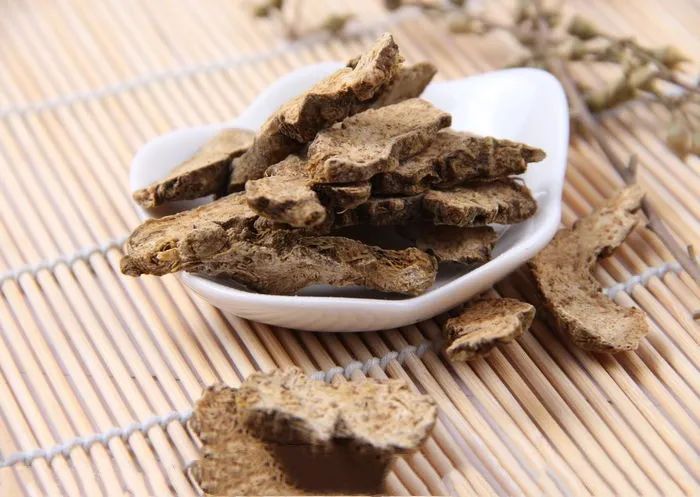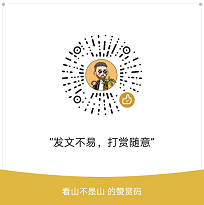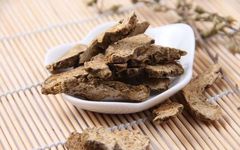
The Efficacy of Atractylodes
Atractylodes, a name in traditional Chinese medicine (TCM), refers to the dried rhizome of the Asteraceae plant Atractylodes lancea (Thunb.) DC. or Atractylodes chinensis (DC.) Koidz.
Alias:
Chi Zhu, Qiang Tou Cai, Ma Ji
Part Used:
The dried rhizome of the plant.
Properties:
Pungent, bitter; warm in nature.
Meridians Entered:
It enters the Spleen, Stomach, and Liver meridians.
Dosage:
Decocted for oral administration, 3-9g.
Functions:
Dries dampness, strengthens the Spleen, dispels wind and cold, and improves vision.
Functions of Atractylodes Indications:
Used for dampness obstructing the middle Jiao, abdominal distension, diarrhea, edema, beriberi, rheumatic pain, wind-cold common cold, night blindness, and blurred vision.
Clinical Applications:
It is an important herb for dispelling dampness, applicable for both internal and external dampness. Historical experience states: “Atractylodes is the most effective for treating external dampness.”
1. Used for treating indigestion (commonly referred to as dampness stagnating in the middle Jiao), characterized by fullness and distension in the stomach, loss of appetite, or vomiting and diarrhea, often combined with Hou Po (Magnolia Bark) and Chen Pi (Aged Tangerine Peel) in formulas like Ping Wei San; if there is a tendency towards heat stagnation, it can also be combined with Xiang Fu (Cyperus) and Shen Qu (Malt) among others.
2. Used for treating diarrhea, especially summer diarrhea with significant damp-heat, often combined with Yin Hua (Honeysuckle) and Fu Ling (Poria).
3. Used for treating rheumatism, particularly muscular rheumatism. Commonly combined with Ma Huang (Ephedra), Gui Zhi (Cinnamon Twig), and Yi Yi Ren (Job’s Tears) to enhance analgesic effects. If it is heat bi with fever, thirst, and severe pain with red, swollen joints, a combination with Shi Gao (Gypsum) for heat-clearing is recommended, such as Bai Hu Jia Cang Zhu Tang with modifications.
4. Used in surgery, it has certain effects on treating jaundice and perianal tuberculosis. It can also treat lower limb abdominal distension and pain due to damp-heat resembling erysipelas, often combined with Huang Bai (Phellodendron), Niu Xi (Achyranthes), and Sheng Yi Ren (Job’s Tears) in formulas like Si Miao Wan.
5. Used in ophthalmology for treating night blindness and corneal softening after measles, utilizing its vitamin A properties, often taken in pill or powder form (there are reports of effectiveness using decoction). It can be used alone as a powder or combined with Mu Zei (Equisetum). Prescription: Cang Zhu 120g, Mu Zei 60g, ground into powder and mixed; taken with vegetables at meal times, 3-6g, or combined with male sheep liver.
Additionally, it can be used for strengthening the body. It treats fatigue, weakness of limbs, particularly in cases of deficiency and cold, often combined with Shu Di (Rehmannia) and Gan Jiang (Dried Ginger).
Related Combinations:
1. For treating Spleen deficiency with damp accumulation, phlegm-damp, diarrhea, or external edema: used with Fu Ling, Ze Xie (Alisma), and Zhu Ling (Polyporus) for diuretic and damp-dispelling effects. (“Zheng Zhi Zhun Sheng”)
2. For dispelling dampness and treating bi syndrome with damp predominance: can be used with Yi Yi Ren and Du Huo (Angelica Pubescens) for wind-damp dispelling. (“Lei Zheng Zhi Zai”)
3. For treating wind-cold exterior syndrome with dampness: commonly used with Qiang Huo (Notopterygium), Bai Zhi (Angelica Dahurica), and Fang Feng (Saposhnikovia). (“He Ji Ju Fang”)


Click here to read: A formula by Zhang Zhongjing that cures chronic stomach diseases, chronic gastritis, gastric ulcers, and all symptoms of gastric distension and acid reflux!
A single rapid-acting heart-saving pill can treat over 20 diseases; don’t just use it for heart attacks, make sure to save it!
This is an article that silences critics of TCM; see how personnel from the Ministry of Science and Technology evaluate TCM!
Click “Read the original text”↙ to see more exciting content

